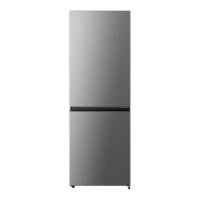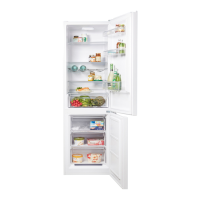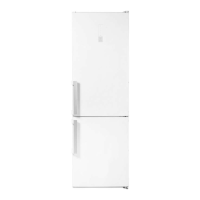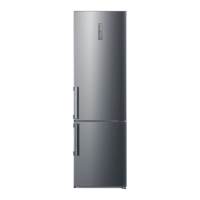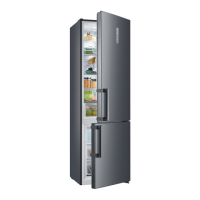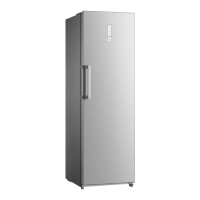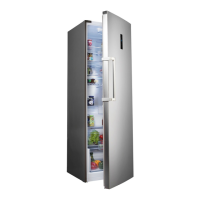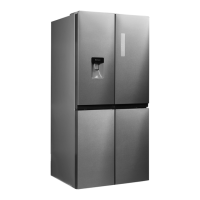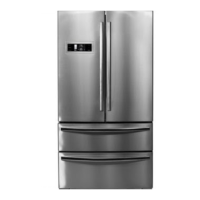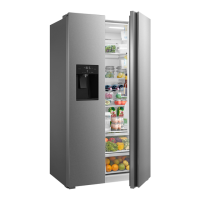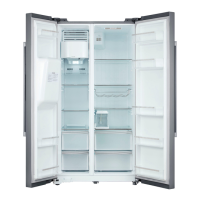Freezing foods, storing frozen foodsPage EN-20
About the maximum specified
freezing capacity
If you want to freeze more food in one go as
an exception, freezing will take longer. Keep
fresh goods out of contact with existing fro-
zen foods, as the frozen foods could start
to defrost. If contact with stored food cannot
be avoided, we recommend that you create
a cold reserve in the freezer before freezing
the fresh goods.
Storing frozen food
The deep-freeze chain must not be broken
between the manufacturer and your freezer.
The temperature of the frozen food must al-
ways be at least –18 °C.
Therefore, do not buy any goods that
– are in frosty, over-icy chests.
– are stacked above the stipulated high-
load marker.
– partially clumped (particularly easy to
identify with berries and vegetables).
– have snow and juice traces.
Transport frozen foods in special polystyrene
boxes or insulated bags.
Observe the storage conditions and times on
the packaging.
Defrosting food
• Observe the following basic rules when
defrosting food:
– To defrost food, remove it from the
freezer and let it defrost at room tem-
perature or in the refrigerator.
– Always defrost meat, poultry and fish
in the refrigerator. Make sure that the
frozen food is not immersed in its own
thawing liquid.
– To defrost food quickly, use the de-
frost function on your microwave, for
example. Observe the manufacturer’s
instructions and note that bacteria and
germs can form in this way.
– If you only want to defrost part of a
pack, remove the portion you need
and immediately close the rest of the
pack. In this way, you will avoid “freez-
er burn” and will reduce ice formation
on the remaining foods.
Cook or use thawed foods as soon as
possible. Dispose of the defrosting liquid.
